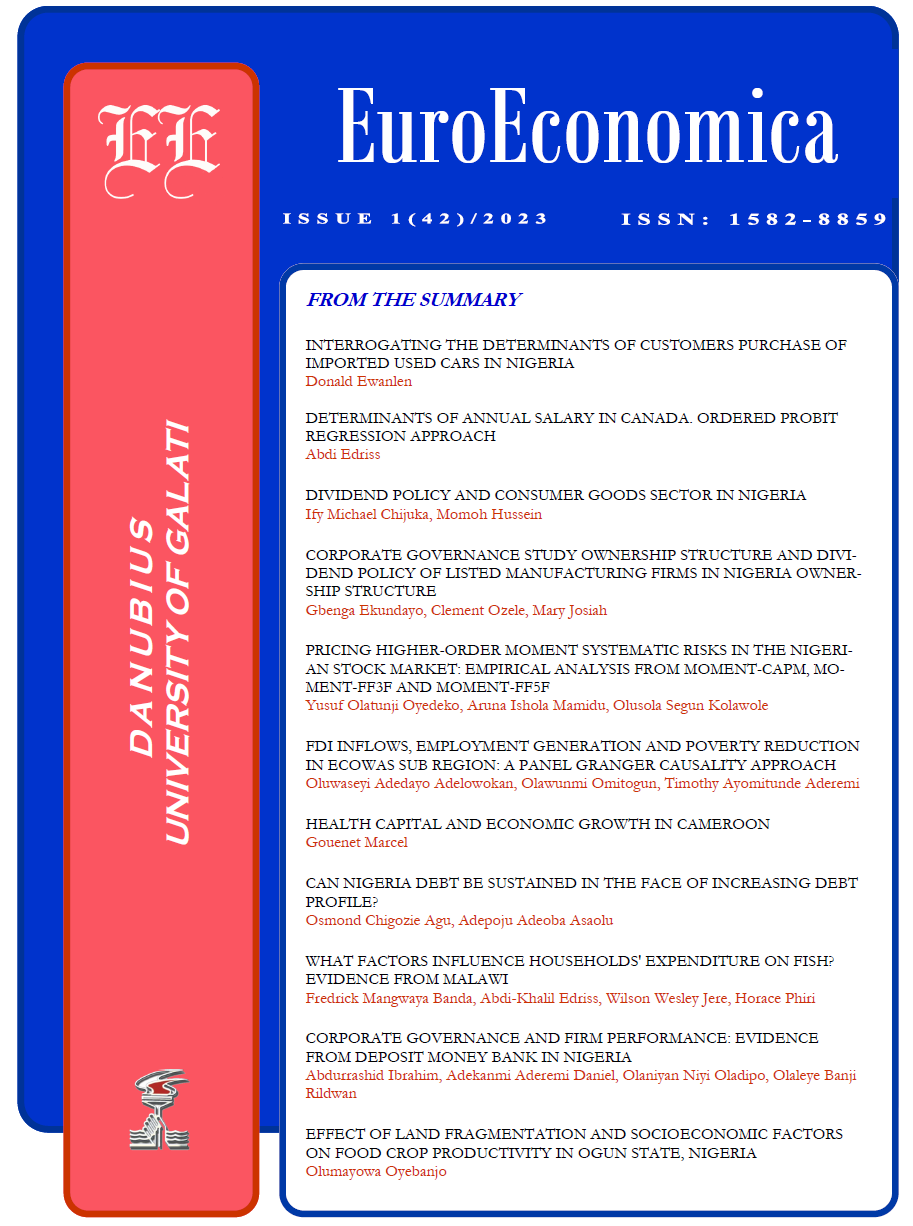What Factors Influence Households' Expenditure on Fish? Evidence from Malawi
Abstract
The purpose of this study was to find the drivers of fish expenditure in urban Malawi using Blantyre as a case study. Previous demand studies on the fisheries sector in Malawi have concentrated on the determinants of consumer choices and demand for tilapia fish thereby making information regarding households’ general consumption pattern of fish scanty. This study is, therefore, the first to provide an analysis of the drivers of fish consumption in Malawi employing primary data collected from the households in Blantyre city using a multistage stratified random sampling procedure. Results show that statistically significant negative determinants of per capita fish expenditure include the price of vegetables, the price of rice, the number of adults in the household, and the household’s per capita food expenditure away from home, while, the price index of food, price of maize, the predicted value of food, and household’s income level are the statistically significant positive drivers of per capita fish expenditure. General policy implications arising from this study are that policymakers need to ensure that people have higher incomes, and that food prices are kept low.
References
Agricultural and Resource Economics. 52, 321–338.
Gujarati, D. (2004). Basic Econometrics. New York: McGraw-Hill Companies
Lancaster, K. J. (1966). A New Approach to Consumer Theory. Journal of Political Economy. 74(2), 132-157.
Malawi Government (2016). National Fisheries and Aquaculture Policy. Available at: http://www.unpei.org/malawi-government-national-fisheries-and-aquaculturepolicy-.
Malawi Government (2021). Annual Economic report 2021. Ministry of Economic Planning, Development and Public Sector Reforms, Department of Economic Planning and Development, Lilongwe.
Murray, G., Wolff, K., & Patterson, M. (2017). Why eat fish? Factors influencing seafood consumer choices in British Columbia, Canada. Ocean & Coastal Management. 144,16–22.
https://doi.org/10.1016/j.ocecoaman.2017.04.007.
Nankwenya. B., Kaunda, E. & Chimatiro, S (2017). The demand for fish products in Malawi: An almost ideal demand system estimation. Journal of Economics and Sustainable Development. 8 (16), 63–71.
Thong, N. T., & Solgaard, H. S. (2017). Consumer’s food motives and seafood consumption. Food Quality and Preference. 56, 181–188. doi.org/10.1016/j. foodqual.2016.10.008.
Phiri, L.Y., Dzanja, J., Kakota, T. & Hara, M. (2013). Value Chain Analysis of Lake Malawi: A Case Study of Oreochromis spp (chambo). International Journal of Business and Social Science. 4(2).
Zikmund, W.G., Babin, B. J., Carr, J. & Griffin, M. (2010). Business Research Methods. 8th edition. Canada: South Western Cengage Learning.
Downloads
Published
How to Cite
Issue
Section
License
Copyright (c) 2023 Fredrick Mangwaya Banda, Abdi-Khalil Edriss, Wilson Wesley Jere, Horace Phiri

This work is licensed under a Creative Commons Attribution-NonCommercial 4.0 International License.
The author fully assumes the content originality and the holograph signature makes him responsible in case of trial.


